 by "ttyymmnn" (ttyymmnn)
by "ttyymmnn" (ttyymmnn)
Published 06/27/2017 at 12:35
 by "ttyymmnn" (ttyymmnn)
by "ttyymmnn" (ttyymmnn)
Published 06/27/2017 at 12:35
Tags: Planelopnik
; planelopnik history
STARS: 12
Welcome to This Date in Aviation History , getting you caught up on milestones, important historical events and people in aviation from June 24 through June 27.
!!! UNKNOWN CONTENT TYPE !!!
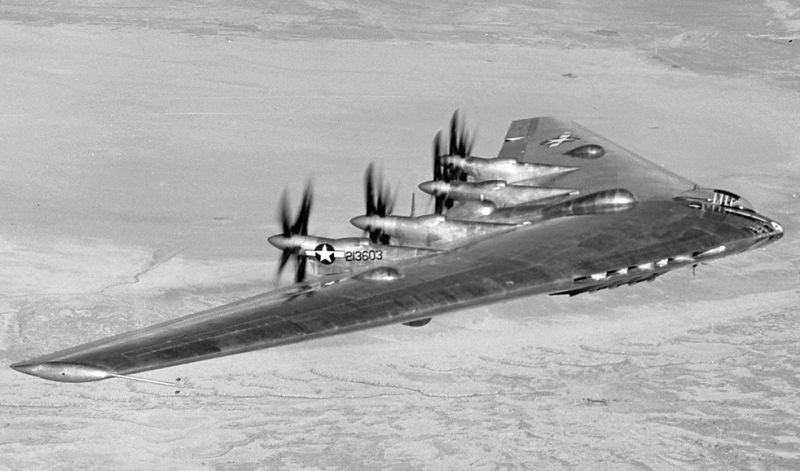
June 25, 1946 – The first flight of the Northrop YB-35. Heavy, strategic bombing reached its heyday during WWII, and some of the greatest technological advances of the era were made in the design of long-range bombers that could carry increasingly heavier payloads at ever greater distances. While work was underway on the Boeing B-29 Stratofortress , arguably the greatest of the piston-powered heavy bombers to come out of the war, the US Army Air Corps issued a request to the aviation industry for a new bomber that would be capable of carrying 10,000 pounds of bombs on a round-trip mission of 10,000 miles. The new bomber would also need to have a maximum speed of 450 mph and a service ceiling of 45,000 feet. The impetus for the design was to have a bomber that could reach occupied Europe in the event that Britain fell to the Nazis. Both Boeing and Consolidated responded, with Consolidated offering the B-36 Peacemaker , though it wouldn’t be ready for service until after the war. Northrop was eventually included in the competition, but Jack Northrop took a more radical approach, hoping to extend the range and payload of their bomber by making it as aerodynamically efficient as possible. Since any part of an aircraft that moves through the air produces drag, Northrop believed that the best way to reduce drag was to eliminate the fuselage, tail, and any other parts of the plane that didn’t generate lift, making a plane that was no more than a flying wing. The center section contained the cockpit and crew quarters, including bunks for off-duty pilots on long missions. A large, protruding tail cone housed the targeting equipment along with defensive machine guns. In all, Northrop planned for 20 machine guns or cannons housed in six turrets. Since the design was such a departure from traditional design, Northrop first developed a one-third scale flying wing, the Northrop N-9M , which was used to gather data on flight characteristics of the flying wing and also act as a trainer for the YB-35 pilots. The YB-35 was powered by four Pratt & Whitney R-4360 Wasp Major radial engines each turning a contra-rotating propeller . The engines and propellers were supplied, untested, by the US Army, and they soon displayed significant vibration issues which proved to be so severe that Jack Northrop grounded the bomber until the problems could be fixed. Even though the YB-35 had greater range than the B-36, the Air Force deemed propeller engines obsolete by the late 1940s, and ordered that Northrop modify the YB-35 to be fitted instead with eight turbojet engines, leading to the flying wing’s reclassification as the YB-49 .
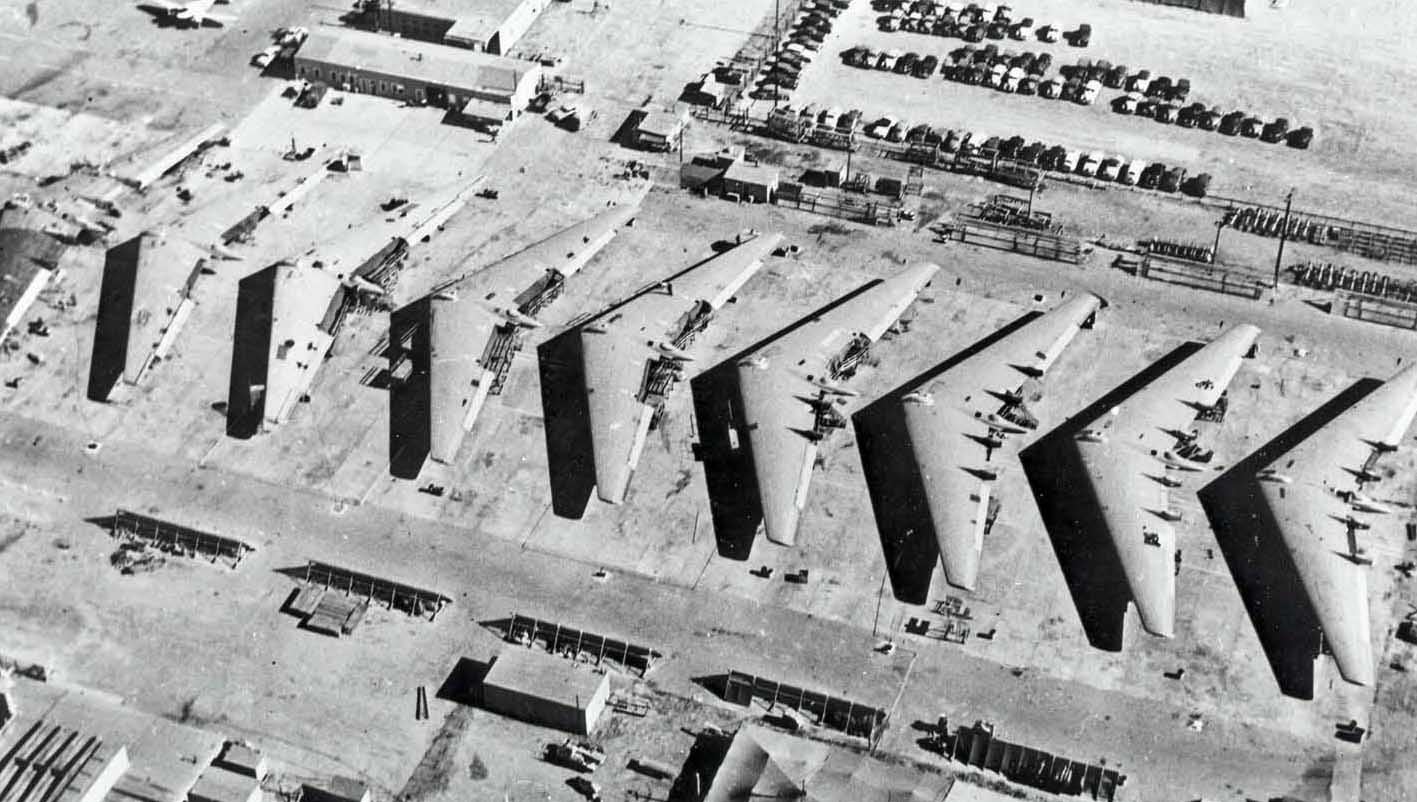
The jet engines gave the bomber the flight performance the Air Force desired, but the range was cut nearly in half, and the flying wing no longer had the capability to reach overseas targets from the US. It also proved very difficult to fly. Though the Air Force had originally contracted for 200 bombers, only thirteen YB-35s were built, and only one ever flew. Two of the airframes were converted to the YB-49, one of which crashed. All the remaining airframes were scrapped. While some, including Jack Northrop, were convinced that it was a political conspiracy that ended the flying wings, it was was also likely a case of an idea that was too far ahead of its time. In 1981, when Northrop was frail and near death, the Northrop Grumman team working on the B-2 Spirit flying wing bomber brought him to the factory and showed him the plans and a scale model of the B-2 at a time when the project was still top secret. Northrop’s poor health had left him unable to speak, but he reportedly wrote on a piece of paper, “Now I know why God has kept me alive for 25 years.” He died 10 months later, no doubt feeling vindicated for his unyielding belief that his flying wing would one day become a reality. (US Air Force photos)
!!! UNKNOWN CONTENT TYPE !!!
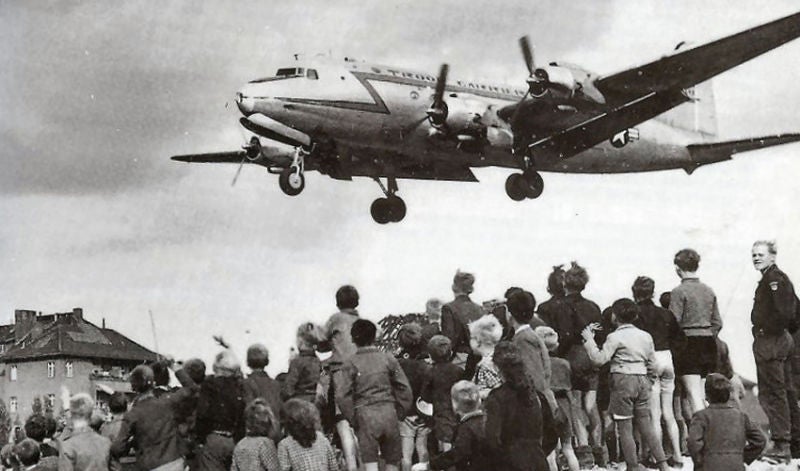
June 26, 1949 – The Berlin Airlift begins. Following the D-Day landings in France on June 6, 1944, Germany found itself squeezed on two fronts. The Allies were pushing eastward on a broad front throughout Europe, while the Russians were moving westward at a breakneck pace to reach the German capital. Berlin fell to the Russians on May 2, 1945 and, as had been decided at the Yalta Conference held in February of that year, the German capital was divided into four zones. The Russians controlled the eastern quarter of the city, while the rest was divided between the French, British and Americans. The city itself was deep inside eastern Germany, which was fully controlled by the Russians. Though the shooting war was over, the Cold War between the Western Bloc (the US and its NATO allies) and Russia had begun. The fragile wartime alliance between the West and the Soviet Union ended, and both sides sought to influence the political makeup of Europe and the world through economic and political policies and proxy wars . On June 24, 1948, in an effort to make the city of Berlin entirely its own, Russia cut off the western sectors from the outside world, severing water connections and halting all vehicular and river traffic into or out of the Allied sectors. West Berlin was effectively cut off from the rest of Western Europe, and it became an island inside Communist East Germany. But while the Russians could block all road, rail and water access to the beleaguered city, they could not put a roof over it, and the Western allies began the greatest airlift of supplies in history. Though the Russians controlled all ground access to Berlin, they had agreed prior to the blockade to let the Western allies use three air corridors from western Germany into Berlin, and these corridors formed the supply routes. Starting haphazardly at first, the operation was taken over first by US Brigadier General Joseph Smith, who had commanded Boeing B-29 Superfortresses under General Curtis LeMay during the war. But Smith had no airlift experience, and he was soon replaced by Major Gerneral William Tunner , a veteran of airlift operations over the Himalayas during the fight against Japan. Tunner cobbled together an aerial armada of Douglas C-47 Skytrains and British C-47 Dakotas, Douglas DC-3 airliners, and Douglas C-54 Skymasters and started round-the-clock flights. He instituted strict rules to streamline the operation, such as requiring IFR landings regardless of weather and the elimination of aircraft stacking while planes awaited landing. If an aircraft missed an approach, the crew was required to return to their starting point, fully laden, and try again. Tunner required air crews to stay with their planes at all times, and refreshments were brought out to the crews on the tarmac so they could take off immediately after unloading. West Berlin citizens pitched in to help unload the planes.
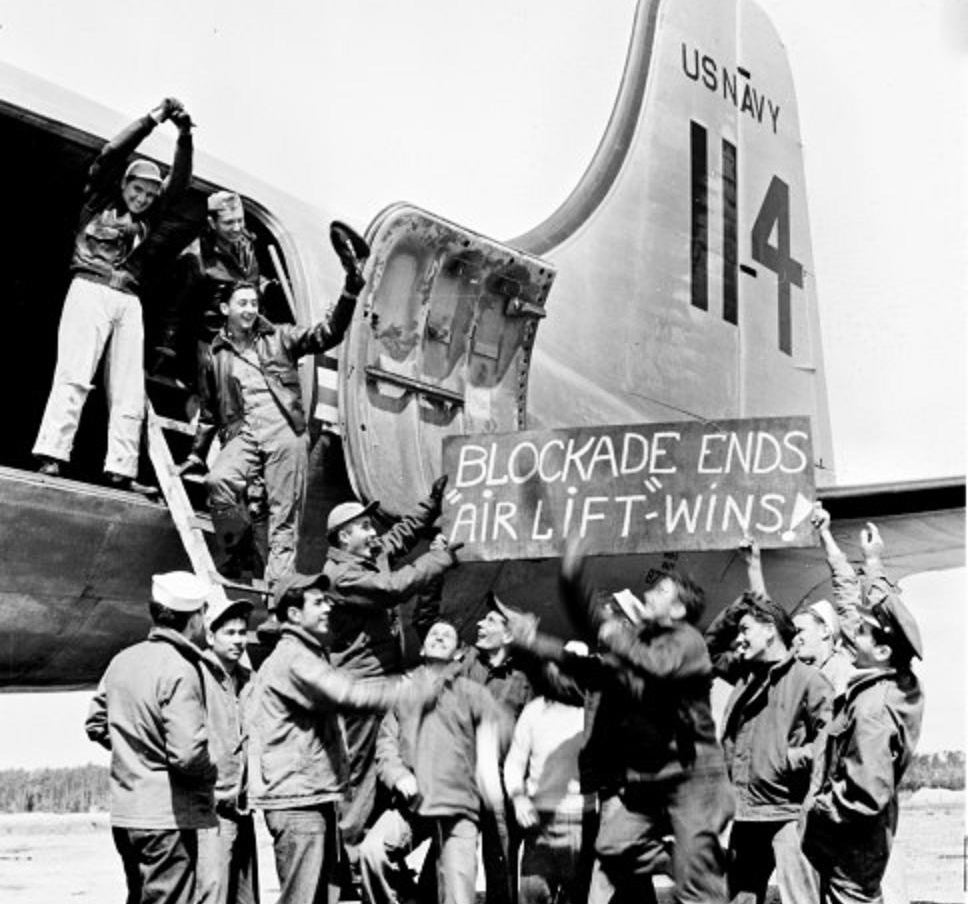
By the end of August 1948, 1,500 flights per day—one landing every minute—were delivering more than 5,000 tons of cargo, enough to keep the city fed and powered in spite of the blockade. And on Easter Sunday, 1949, the airlift managed to deliver 13,000 tons of cargo, including the equivalent of 600 railroad cars of coal. The airlift continued for 11 months, making more than 189,000 flights totaling nearly 600,000 hours of flying and flying more than 92 million miles. Faced with this herculean effort, the Russians finally conceded and lifted the blockade one minute after midnight on May 12, 1949. Berlin remained a free city, and it stood as an important symbol of the West’s resolve to fight the spread of Communism in Europe until the reunification of Germany in 1990. (US Air Force photo)
!!! UNKNOWN CONTENT TYPE !!!
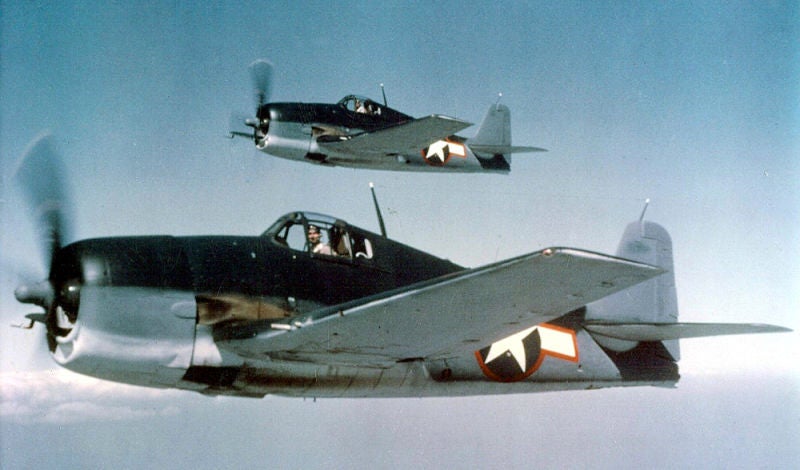
June 26, 1942 – The first flight of the Grumman F6F Hellcat. When the US Navy entered WWII, their primary carrier-based fighter was the Grumman F4F Wildcat , a fighter that, while an all-metal monoplane, was still very much a product of an earlier era of fighters. It was only one generation removed from the Grumman F3F , the last biplane fighter to serve the Navy, and the Wildcat even shared the F3F’s hand-cranked landing gear. While the Wildcat served well enough in the early days of the war, it was clear that a more modern fighter was needed to counter the superb Mitsubishi A6M Zero that ruled the skies in the Pacific. Fortunately for the Navy, a successor was waiting in the wings, a fighter that had been undergoing development since 1938, and one that would prove every bit the match for the nimble Zero. Soon after the Wildcat made its first flight on September 2, 1937, and even before it entered Navy service, Grumman started working on its successor. By 1941, six months before the Japanese attack on Pearl Harbor, a prototype was ready for testing. And while the Hellcat bore a significant resemblance to the Wildcat, it was in fact an entirely new aircraft. Gone was the hand-cranked landing gear, replaced by hydraulically actuated struts that folded fully into the wing. The wings were also mounted closer to the bottom of the fuselage and could be hydraulically folded back for carrier storage. It was also 5 feet longer, had a greater wingspan, and outweighed the Wildcat by 3,000 pounds. As development of the Hellcat continued, Grumman got valuable input from pilots who had faced the Zero in combat and, as a direct result of those meetings, the Hellcat’s original Wright R-2600 Twin Cyclone radial, which produced 1,700 hp, was replaced with a Pratt & Whitney R-28900 Double Wasp 18-cylinder radial capable of 2,000 hp, the same engine being used in the Vought F4U Corsair and Republic P-47 Thunderbolt . The new power plant gave the Hellcat a top speed of 391 mph compared to the Zero’s 332 mph. Where the Zero was designed to be light and agile, it offered no protection to the pilot. Grumman, on the other hand, nicknamed “The Iron Works” for their reputation for building rugged aircraft, gave the Hellcat a bullet-resistant windscreen, 212 pounds of cockpit armor to protect the pilot, and self-sealing fuel tanks, weight increases that were offset by the more powerful engine. The Hellcat’s claws were six .50 caliber Browning AN/M2 machine guns mounted in the wings, and it could carry up to 4,000 pounds of bombs, rockets or torpedoes.
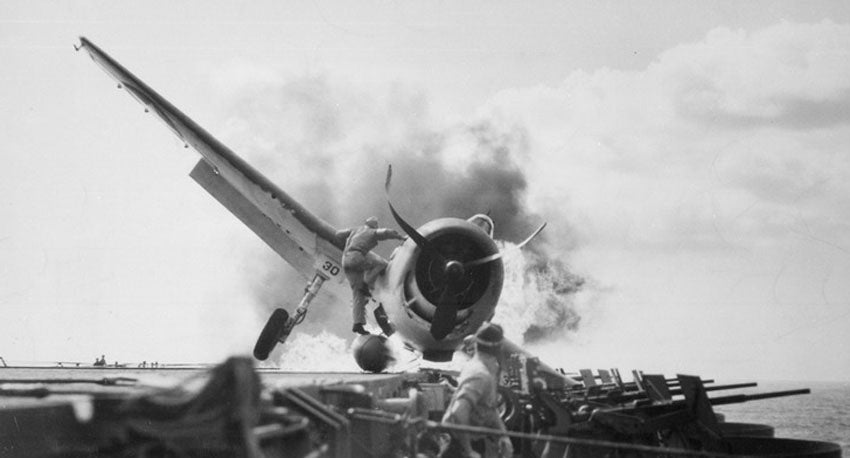
The F6F entered service in 1943, and despite the fact that it was slower than the Corsair, it was better suited to carrier operations, and the Hellcat became the standard US Navy fighter until the end of the war. When tested against a captured A6M5 Zero, the Hellcat proved to be faster, could outturn the Japanese fighter at higher altitudes, and had a faster roll rate. The Zero was still a better dogfighter at lower altitudes, but American pilots learned to use the Hellcat’s weight and firepower to its advantage in diving attacks on Japanese fighters. By the end of the war, Navy and Marine pilots calmed 5,163 victories over Japanese aircraft at a loss of 270 Hellcats, a ratio of 19:1 when taking into account both claimed and confirmed victories. There were no less than 305 pilots who became aces in the F6F. Grumman produced over 12,000 Hellcats during WWII, and after the war they were used as second-line fighters behind the Grumman F8F Bearcat , and also served as trainers and even as pilotless radio-controlled bombs during the Korean War. A night fighter variant served the US Navy until 1954, and the Hellcat also flew as the original aircraft for the US Navy’s Blue Angels flight demonstration team when the team was formed in 1946. The final Hellcats were retired from service with the Uruguayan Navy in 1960. (US Navy photos)
!!! UNKNOWN CONTENT TYPE !!!
!!! UNKNOWN CONTENT TYPE !!!
!!! UNKNOWN CONTENT TYPE !!!
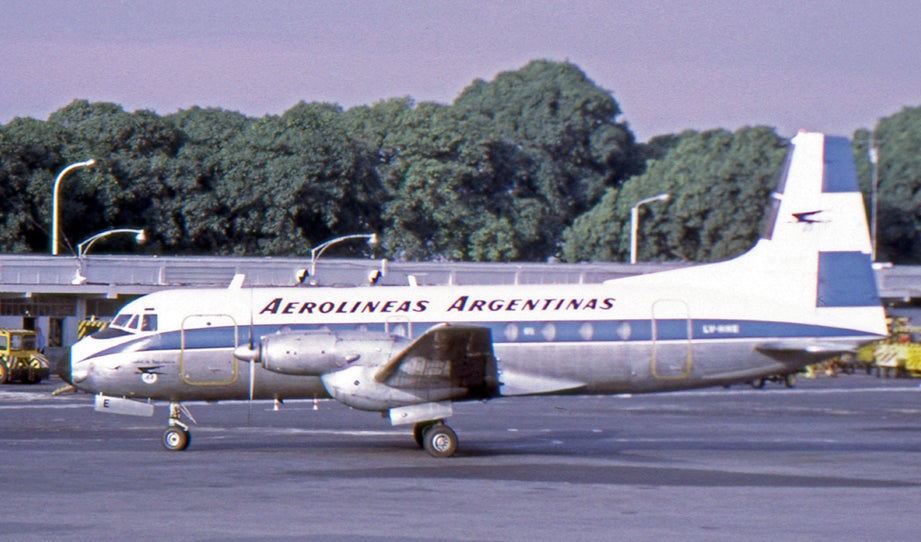
June 24, 1960 – The first flight of the Hawker Siddeley HS 748,
a turboprop-powered airliner originally developed by
Avro
to replace the
Douglas DC-3
. Designed for short takeoff and landing (STOL) and the ability to operated from rough, unpaved airfields, the HS 748 was envisioned as a smaller competitor to the four-engine
Vickers Viscount
and was capable of accommodating up to 40 passengers. The two
Rolls-Royce Dart
engines gave the HS 748 a cruising speed of 281 mph, and subsequent variants allowed for up to 58 passengers. A total of 380 were produced between 1961-1988, and roughly 20 remain in service today.
(Photo by RuthAS via
Wikimedia Commons
)
!!! UNKNOWN CONTENT TYPE !!!
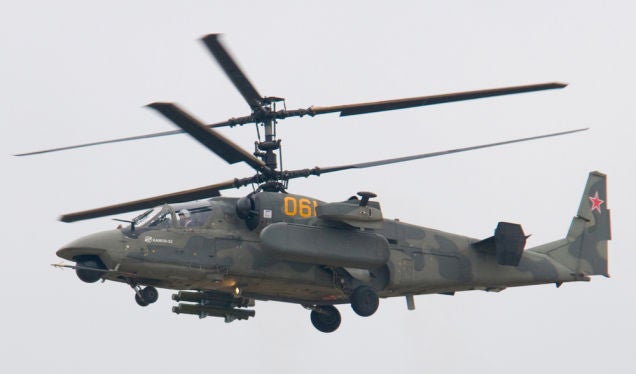
June 25, 1997 – The first flight of the Kamov Ka-52 Alligator, a two-seat variant of the Kamov Ka-50 attack helicopter. Following tests that compared the single-seat Ka-50 and the existing Mil Mi-28 gunship, Kamov determined that it would be cheaper to develop their existing helicopter into a more capable ground attack and reconnaissance helicopter than create a new one. The second crew member, seated beside the pilot, operates the the radar and targeting equipment, leaving the pilot free to fly the aircraft. Production began in 1996, and 80 have been built to date. The Alligator has seen action as recently as 2015 during Russia’s support of the Syrian government in the ongoing Syrian Civil War . (Photo by Visergey via Wikimedia Commons )
!!! UNKNOWN CONTENT TYPE !!!
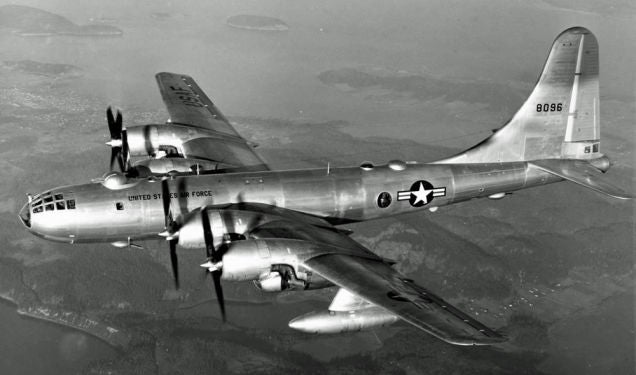
June 25, 1947 – The first flight of the Boeing B-50 Superfortress, an upgraded variant of the Boeing B-29 Superfortress that was fitted with more powerful engines, a lengthened fuselage, an enlarged stabilizer and was constructed from a lighter aluminum alloy. The B-50 was never used as a bomber, but the RB-50 reconnaissance variant was flown extensively to probe the northern reaches of the Soviet Union during the Cold War, and the KB-50 served as an early aerial refueling platform, eventually receiving a pair of General Electric J47 turbojet engines to help it keep pace with jet fighters. Following the introduction of the Boeing B-47 Stratojet and B-52 Stratofortress , the B-50 was retired in 1965. (US Air Force photo)
!!! UNKNOWN CONTENT TYPE !!!

June 25, 1944 – The first flight of the Ryan FR Fireball, a mixed-propulsion fighter that was powered by a Wright R-1820 Cyclone radial engine in the front and a General Electric J31 turbojet in the rear. The fuselage ultimately proved too weak for carrier operations despite modifications to strengthen it, and production of the unfortunately-named Fireball was canceled with the end of WWII after only 66 aircraft were built. The Fireball is notable as the first jet-powered aircraft to land on a carrier, but that was only because its radial had engine failed in flight. By August 1947, all Fireballs were removed from service and most were scrapped. Only one remains and is on display at the Planes of Fame Air Museum in California. (US Navy photo)
!!! UNKNOWN CONTENT TYPE !!!

June 25, 1928 – The first flight of the Boeing P-12, the last biplane fighter developed by Boeing. The P-12 was developed as a replacement for the Boeing F2B and F3B fighters built for the US Navy, but its use of corrugated aluminum control surfaces and fabric-covered aluminum tube fuselage meant that it was faster and more nimble than its predecessors, even though it used the same Pratt & Whitney R-1340 Wasp radial engine. Known as the F4B in US Navy service, the P-12 entered service in 1930 and was flown by frontline fighter pursuit groups until 1935, when it was replaced by the all-metal monoplane Boeing P-26 Peashooter . The US Army flew a total of 366 P-12, while 187 F4Bs served the Navy. Four were built for civilian customers, one of which was purchased by Howard Hughes . (US Air Force photo)
!!! UNKNOWN CONTENT TYPE !!!
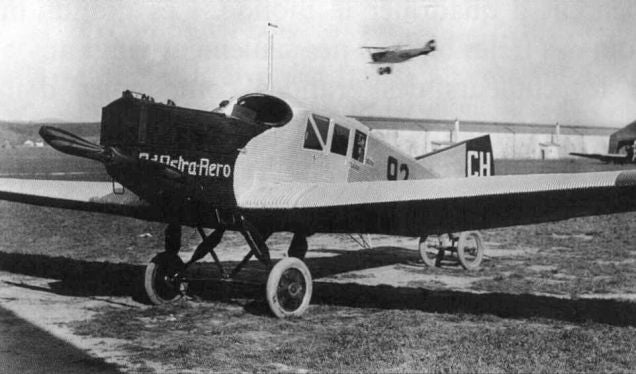
June 25, 1919 – The first flight of the Junkers F.13,
the world’s first all-metal transport aircraft. German aircraft designer
Hugo Junkers
pioneered the use of corrugated
duralumin
airplane skins, and his unbraced monoplane design was well ahead of other fabric-covered biplanes of the era. The F.13 carried 4 passengers in an enclosed, heated cabin and also had an enclosed cockpit. Junkers sold his aircraft abroad, and some were built under license in the US and flown by the US Post Office Department. Others were converted to float planes. To sell more aircraft, Junkers started his own airline,
Junkers Luftverkehr
in 1921. A total of 332 F.13s were built between 1919-1932, and four remain today in museums, with a fifth currently undergoing restoration.
(Photo author unknown)
!!! UNKNOWN CONTENT TYPE !!!

June 25, 1886 – The birth of Henry “Hap” Arnold, an aviation pioneer who took flying lessons from the Wright brothers and was the Commanding General of the US Army Air Forces during WWII. Arnold was one of the world’s first military pilots, and oversaw the expansion of the US Army Air Forces in WWII from a tiny force of 800 planes into the largest air force in the world. Arnold is also the only Air Force general to hold a five-star rank, and when the USAAF became the US Air Force in 1947, Arnold became the only officer to hold a five-star rank in two different U.S. military branches. Following the war, Arnold retired to California to write his memoirs, and died in 1950 at age 63. (Photo author unknown)
!!! UNKNOWN CONTENT TYPE !!!
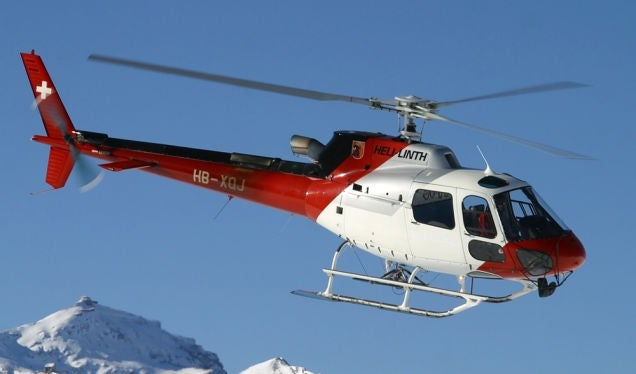
June 26, 1974 – The first flight of the Eurocopter AS350 Écureuil ( Squirrel ), a single-engine light utility and transport helicopter developed by Aérospatiale as a replacement of the Aérospatiale Alouette II . The Alouette’s initial successor, the Gazelle , was a success in the military market, so the Écureuil was directed at the civilian market, and steps were taken to keep the cost of the helicopter as low as possible. The production helicopter is powered by a Turbomeca Arriel 2B turboshaft engine which gives the Écureuil a cruising speed of 152 mph, and the helicopter has capacity for 5 passengers. Nearly 4,000 have been produced, and the Écureuil is operated all over the world and is particularly popular with civil authorities. (Photo by Elisabeth Klimesch via Wikimedia Commons )
!!! UNKNOWN CONTENT TYPE !!!
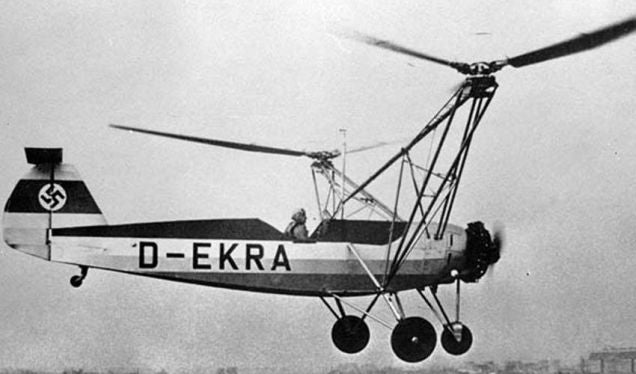
June 26, 1936 – The first flight of the Focke-Wulf Fw 61, a tandem-rotor helicopter that is considered the fist practical and functional helicopter. While Igor Sikorsky is known for his groundbreaking work with single-rotor helicopters, the Fw 61 used two counter-rotating, three-bladed rotors to provide lift, while lateral control was achieved by the use of cyclic pitch and asymmetric rotor lift. Torque was controlled through the counter-rotation of the rotors, and a small propeller at the front worked only to cool the engine. Only two were built, and one was flown famously by Hanna Reitsch inside the Deutschlandhalle in 1938. The Fw 61 also set an unofficial altitude record of 11,234 feet in 1938. (Photo author unknown)
!!! UNKNOWN CONTENT TYPE !!!
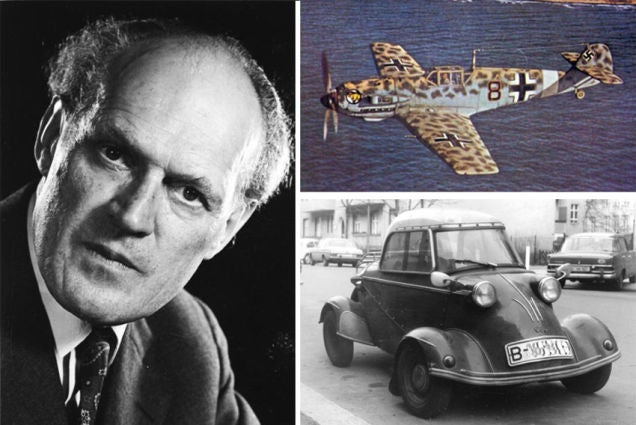
June 26, 1898 – The birth of Willy Messerschmitt. Messerschmitt began his design career building sail planes during WWI, then moved on to build small sport and passenger planes. In 1936, Messerschmitt won the competition to provide the fledgling Luftwaffe with a new frontline fighter, the Bf 109 , one of the war’s iconic fighters, and it would be produced in greater numbers than any other aircraft in history. After the war, Germany was forbidden from producing aircraft until 1955, so Messerschmitt turned to the manufacture of sewing machines, prefab buildings, and the Messerschmitt Kabinenroller automobile. He also exported his aircraft design talents to other countries, designing the Hispano HA-200 jet trainer for Spain in 1952 before he was allowed to return to aircraft manufacturing, producing the Fiat G91 and the Lockheed F-104 Starfighter under license for the West German Luftwaffe. His final design was the Helwan HA-300 , supersonic interceptor for the Egyptian air force. Messerschmitt died on September 15, 1978 at the age of 80. (Messerschmitt photo via Deutsches Bundesarchiv; Kabinenroller photo by G. Petermann via Wikimedia Commons ; Bf 109 photo author unknown)
!!! UNKNOWN CONTENT TYPE !!!
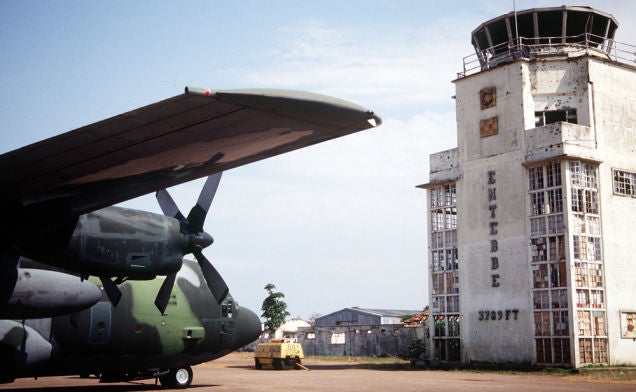
June 27, 1976 – The hijacking of Air France Flight 139. Air France Flight 139, an Airbus A300 (F-BVGG), departed Tel Aviv, Israel carrying 246 passengers and flew to Athens, where hijackers secretly boarded the plane along with other passengers. After departing for Paris, the hijackers took over the plane and flew it first to Libya, then Entebbe, Uganda. The hijackers demanded $5 million dollars and the release of Palestinian militants, many of who were held in Israeli jails. On July 4, following unsuccessful diplomatic negotiations, Israeli commandos stormed the airport where the hostages were being held, killing the hijackers, along with three hostages who were caught in the crossfire. One commando was killed by Ugandan soldiers as the hostages loaded planes to be flown out of the country. (US Department of Defense photo)
!!! UNKNOWN CONTENT TYPE !!!
!!! UNKNOWN CONTENT TYPE !!!
!!! UNKNOWN CONTENT TYPE !!!
!!! UNKNOWN CONTENT TYPE !!!
!!! UNKNOWN CONTENT TYPE !!!
!!! UNKNOWN CONTENT TYPE !!!
!!! UNKNOWN CONTENT TYPE !!!
If you enjoy these Aviation History posts, please let me know in the comments. And if you missed any of the past articles, you can find them all at Planelopnik History . You can also find more stories about aviation and aviators at Wingspan and Planes You’ve (Probably) Never Heard Of .
!!! UNKNOWN CONTENT TYPE !!!
 "HammerheadFistpunch" (hammerheadfistpunch)
"HammerheadFistpunch" (hammerheadfistpunch)
06/27/2017 at 12:44, STARS: 4
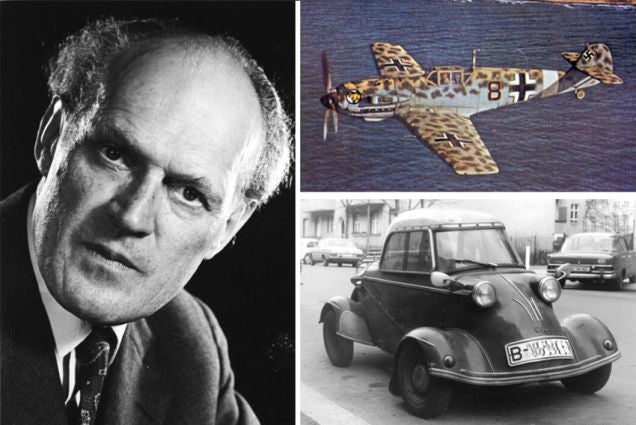
Do you think this is a game?!
 "LongbowMkII" (longbowmkii)
"LongbowMkII" (longbowmkii)
06/27/2017 at 12:47, STARS: 2
The flying wing is the best plane design ever, bar none.
Also cool are multi fuselage designs like the P-38
 "RamblinRover Luxury-Yacht" (ramblininexile)
"RamblinRover Luxury-Yacht" (ramblininexile)
06/27/2017 at 12:51, STARS: 2
Whoever had the idea of bringing in Jack Northrop to see the project was the absolute definition of a mensch.
When I was in Berlin, I got the impression that the airlift is still considered a legendary feat by the people of the city, and it counts to my mind as one of the best moments of foreign policy the Truman administration ever saw.
I was curious about that incident on the Enterprise, and a search for Walter Chewing’s name reveals that he was awarded the Navy & Marine Corps medal. No surprise, really.

06/27/2017 at 13:04, STARS: 0
I love that there’s a P-61 flying chase on the XB-35.
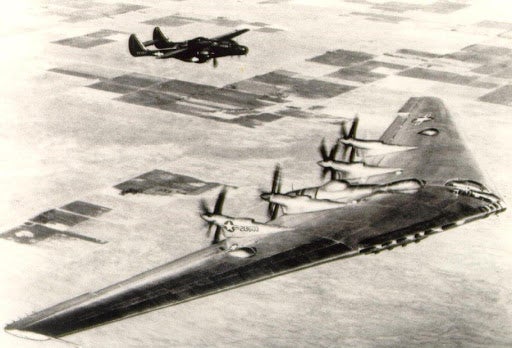
Just in case someone here hasn’t seen it, I highly recommend “ The Wing Will Fly ”, produced by Discovery Channel back when they actually did educational programming in 1991
 "Smallbear wants a modern Syclone, local Maple Leafs spammer" (smallbear94)
"Smallbear wants a modern Syclone, local Maple Leafs spammer" (smallbear94)
06/27/2017 at 13:14, STARS: 1
Re the P-12, it was indirectly responsible for the Hughes Racer, and that could easily be stretched to include several prominent WW2 fighter aircraft that borrowed from Hughes design. IIRC he had the naval variant, but that doesn’t matter... long story short he was never satisfied and kept making modifications to it to make it faster. Eventually his mechanic got fed up and asked why he didn’t just design his own aircraft. He took the sarcasm to heart. End result: Hughes Racer.
 "facw" (facw)
"facw" (facw)
06/27/2017 at 14:02, STARS: 1
Interestingly when Russia tried to sell the Ka-50 family to Turkey, they proposed a design with tandem cockpit instead of the side by side:

 "haveacarortwoorthree2" (haveacarortwoorthree2)
"haveacarortwoorthree2" (haveacarortwoorthree2)
06/27/2017 at 14:50, STARS: 0
As an aside, my teenage son and I were in Seattle this weekend and spent several hours at the Boeing Museum of Flight. What an awesome place! You could easily spend a full day there.
 "ttyymmnn" (ttyymmnn)
"ttyymmnn" (ttyymmnn)
06/27/2017 at 15:12, STARS: 0
That place is on my bucket list.
 "ttyymmnn" (ttyymmnn)
"ttyymmnn" (ttyymmnn)
06/27/2017 at 15:12, STARS: 0
Cool. I’ve never seen that. Did it help putting the president’s name on the side?
 "ttyymmnn" (ttyymmnn)
"ttyymmnn" (ttyymmnn)
06/27/2017 at 15:14, STARS: 1
That’s cool. I’ve never seen that photo before.
 "ttyymmnn" (ttyymmnn)
"ttyymmnn" (ttyymmnn)
06/27/2017 at 15:16, STARS: 0
I would bet that heroism like Chewing’s happened every day. His act was just immortalized in that remarkable photograph.
 "RamblinRover Luxury-Yacht" (ramblininexile)
"RamblinRover Luxury-Yacht" (ramblininexile)
06/27/2017 at 15:18, STARS: 1
Very true. Well deserved, in any event.
 "facw" (facw)
"facw" (facw)
06/27/2017 at 20:59, STARS: 1
It predates his presidency (though he would have still been noteworthy), but presumably they were just going for the standard meaning . Regardless, the Turks went with the A129, so clearly not much of a boost.